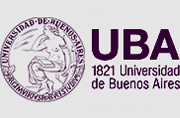OHOW Activities
1. Evaluation of surveillance programs/activities for foodborne zoonoses and AMR
Partners reviewed the existing strategies for surveillance of foodborne pathogens and AMR in their countries along the food chain including animal and public health and food safety aspects through the creation and completion of a form (available in the document section of this web). The following steps/aspects in their ongoing surveillance programs/activities were specifically considered:
- Compartments being sampled/considered (i.e., livestock, humans, food products, environment)
- Type of surveillance systems (i.e., active versus passive surveillance) for each compartment
- Source of information (i.e., official sampling, industry-driven sampling, research activities)
- Animal population considered (poultry, swine, cattle, others)
- Source of human information (when available)
- Geographic coverage (regional vs. national systems)
- Sampling design: objective of the program and sample size
- Stakeholders involved (i.e., industry, regional or national governments from the public health, animal health and/or food safety domains, research institutes, academia, others)
- Use of the information generated by the system, with a focus on the degree of exchange of data between animal health, public health, and food safety branches.
In the kick-off meeting of the project, hosted at VISAVET-UCM in March 2020of the project, the partners presented an overview of the systems in their countries and/or a proposal for collection of any missing information for its evaluation. Along the duration of the project the evaluation will be performed. Documents collected/generated through this activity are available to the rest of the consortium in the document section of this web (technical protocols, publicly available databases, related research articles/scientific communications presenting results from the studied surveillance systems and/or relevant methodological approaches, etc.). Relevant links to national websites are also available in this section. The final result of this activity will be the submission of communications to be presented in scientifically relevant meetings (see activity 3 on outreach) in which the comparative assessment of the surveillance systems of the four countries is presented, with a focus on the identification of ways to promote and optimize true One Health surveillance.
2. Exchange of expertise in the microbiological, molecular, and epidemiological characterization of foodborne pathogens and AMR
Partners presented a summary of their activities and expertise in the kick-off meeting (documents available in the document section) and shared their experience in the activities of sampling design, isolation/detection and characterization of foodborne pathogens and AMR determinants, data analysis and interpretation, and communication of results. The following aspects were discussed:
- Design of environmental sampling
- Direct detection/quantification of foodborne pathogens and AMR determinants using molecular methods in different matrixes.
- Antimicrobial susceptibility testing using phenotypic (i.e., disk diffusion, agar dilution) and molecular methods
- Characterization of bacterial foodborne pathogens using different techniques (Pulsed Field Gel Electrophoresis, Restriction Fragment Length Polymorphism, Whole Genome Sequencing using short (e.g., Illumina) and long (e.g., Pacbio) read sequencing technologies, etc.)
- Use of bioinformatics and machine learning approaches for analysis of large datasets (‘big data analysis’)
As the former objective of this activity of planning a training mission of members from each partner in other institutions was not possible due to the COVID-19 pandemic, online meetings have been held to share the progress of different projects carried out in the centres. The participation of younger researchers in an early stage of their career has been prioritized and some results are published in Centres Activity section.
Furthermore, this activity will serve to generate a database/bank of microorganisms/samples that may be of interest for different members of the consortium and that may be used for collaborative projects (i.e., molecular typing of strains from different origins of a certain pathogen, or metagenomics analysis of environmental samples from different countries). The OHOW network will facilitate the process of putting in place the needed transfer agreements between the different institutions.
3. Elaboration of recommendations for harmonized monitoring of emerging threats to relevant stakeholders in the four countries involved in the proposal
It is expected that activities 1 and 2 will allow to generate an assessment of the strengths and weaknesses of the ongoing systems/activities performed at each of the participating countries regarding monitoring of foodborne pathogens and AMR, as well as to identify potential ways of improving these by incorporating new laboratory/analytical approaches.
This will be translated into a set of recommendations agreed in a final meeting that will be shared in the present web and with relevant stakeholders (governmental agencies, industry, etc.) and will be disseminated through the presentation of the scientific output of the activities performed in the project in scientific meetings A final online meeting to put together the results of these three activities will be scheduled for the end of the project (December 2021).





